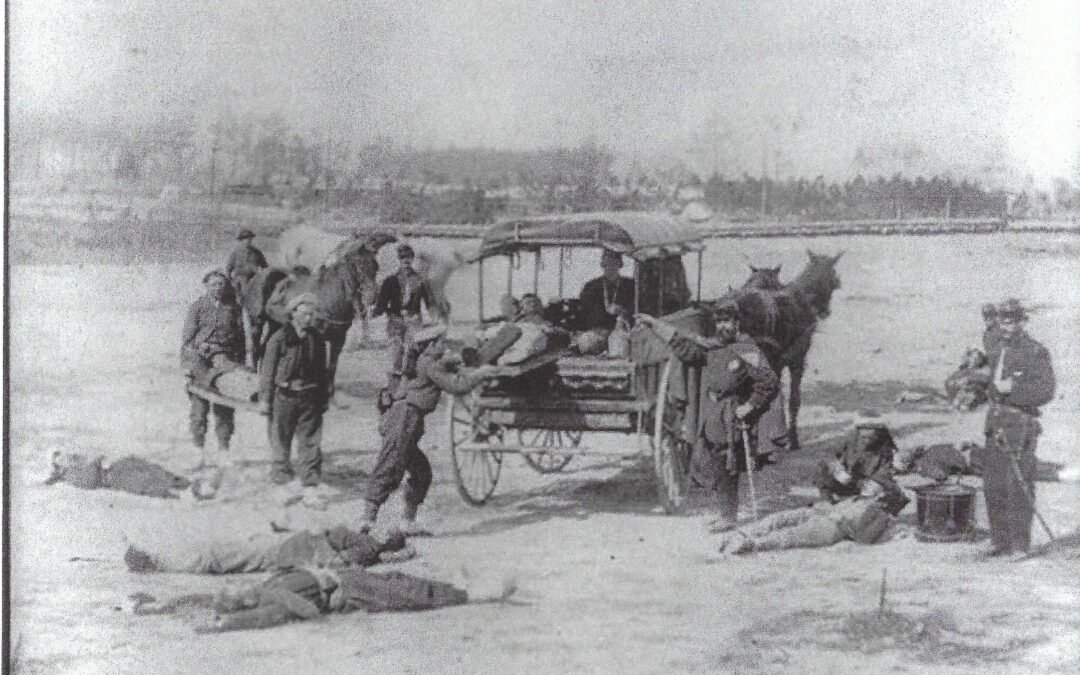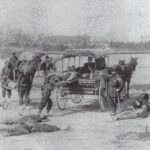Were the actual facts not so ghastly and heart wrenching, LeRoy Pope Walker’s comments just prior to the start of the Civil War would be laughable: “All the blood spilled as a result of the secession could be wiped up with a handkerchief.” Walker, an Alabama state legislator and later the Confederacy’s first secretary of war, had little understanding of the intensity and scope of the conflict that was to start in the spring of 1861. While not as obtuse as Walker, the U.S. Army Medical Department at the start of the war was commanded by a surgeon general who was the product of forty-three years in the regular army. The sclerotic organization he headed was not able to make the necessary changes required by the expanding war. Threatened by the newly-formed U.S. Sanitary Commission, the regular army pushed back on “the sensation preachers, village doctors, and strong-minded women” that demanded changes.
Outraged over the intransigence of the army’s medical corps, U.S. Sanitary Commission executive secretary Frederick Law Olmstead complained: “It is criminal weakness to entrust such responsibility as those resting on the Surgeon-General to a self-satisfied, supercilious, bigoted blockhead, merely because he is the oldest of the old mess-room doctors of the frontier-guard of the country.” Lincoln responded by replacing the Surgeon-General who inspired Olmstead’s wrath with thirty-three-year-old physician William Hammond. In turn, Hammond appointed Jonathan R. Letterman, MD as the medical director of the Army of the Potomac. Letterman was a medical innovator who instituted the concept of triage for handling the wounded, a robust ambulance corps, and the noncombat medic. He also established procedures for improving camps’ sanitary conditions. Further, Hammond saw the value of bringing women into army hospitals. He issued an order in 1862 requiring one-third of army nurses in general hospitals to be women.
Despite bureaucratic obstacles along the way, Letterman was ultimately successful in creating an ambulance corps for the Army of the Potomac; it eventually spread to other Union units and became law in 1864. Historian James McPherson credits Letterman’s ambulance corps with becoming a model for future military units: “Wearing special uniforms and imbued with high morale, these non-combatant medics risked their lives to reach the wounded in the midst of battle and evacuate them as quickly as possible to surgeon’s stations and field hospitals. The ambulance corps became a model for European armies down to World War I; both the Germans and the French adopted the system in the Franco-Prussian War.”
At the Battle of South Mountain in Maryland in September 1862, Dr. Letterman had two hundred ambulances on the field to clear all the wounded who had any glimmer of hope of survival. When Clara Barton and her assistant, Cornelius Welles, passed through South Mountain on their way to Sharpsburg in anticipation of a battle there, they were appalled by the aftermath of South Mountain fighting, but found that the wounded who could be treated had been removed from the battlefield by the US Army ambulance corps that had preceded them.
By January 1863, the advances in medical treatment within the Union Army had made significant progress. Dr. Letterman, working with the U.S. Army Medical Department and with the support of the U.S. Sanitary Commission, had shaken up the army’s old, moribund medical bureaucracy and made major strides in caring for the huge number of casualties. According to historian Stephen B. Oates: “The [Medical] Department now had 2,000 commissioned surgeons in command of almost 10,000 personnel, plus access to thousands of horse-drawn wagons and ambulances.”
The Sanitary Commission and Letterman were successful in making many improvements in soldiers’ care and camp conditions. The sheer volume of casualties, the thousands of men living in crowded, unsanitary conditions, and the elementary state of the medical arts in the 1860s presented staggering obstacles for the U.S. Army Medical Department. However, thanks to the diligent work of Hammond, Letterman and their civilian partners in the U.S. Sanitary Commission, the successful care and treatment of soldiers far exceeded that experienced in other wars such as the Mexican War and the Crimean War.
Photograph courtesy of the Library of Congress collection
Source from Battle Cry of Freedom by James McPherson; Your Brother in Arms and The Better Angels by Robert C. Plumb


Recent Comments